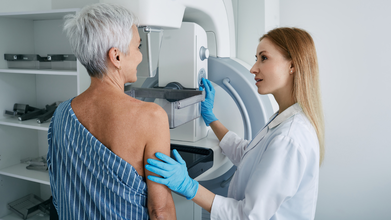- Health Conditions A-Z
- Health & Wellness
- Nutrition
- Fitness
- Health News
- Ayurveda
- Videos
- Medicine A-Z
- Parenting
Air Pollution Can Cause Brain Damage

As Diwali approaches, the air quality in the national capital and regions around it continues to get worse and remains in the "very poor" category. Many experts have also agreed that this prolonged exposure to air pollution can be detrimental to the brain.
"Very Poor" and "Severe" Air Quality
As per the Central Pollution Control Board data (CPCB), the air quality index (AQI) was at 336. Throughout the week the air quality remained in the "very poor" category between 301 to 400. In some areas like Jahangirpuri and Anand Vihar, the air quality even reached 400, "severe" category on AQI. On October 23, Jahangirpuri reported an AQI of 417 and Anand Vihar was at 402.
For the "very poor" category areas, Alipur'a AQI stood at 372, Najafgarh at 342, RK Puram at 352, Shadipur at 322, Rohini at 388, Sirifort at 334, Pusa at 305, Ashok Viha at 359, Dwarka-Sector 8 at 367, Bawana at 391, NSIT Dwarka at 379, Narela at 357, Okhla Phase 2 at 346, Patparganj at 373 and Nehru Nagar at 365 .
As per a recent study in The Lancet Planetary Health showed that short-term air pollution exposure claimed 33,000 lives annually in 10 cities in India, and Delhi topped the list with 12,000 deaths every year.
Health Threats
Air pollution poses a great threat not just to respiratory systems, but also to neurological health. Dr PN Renjen, Senior Consultant, Neurology, Indraprastha Apollo Hospitals, told IANS, "Heavy metals like lead and mercury, along with volatile organic compounds, have detrimental effects on brain function. Neurotoxins from pollution can bypass the blood-brain barrier, triggering inflammation, oxidative stress, and neuronal damage."
The doctor explained that this not only impairs cognitive abilities such as memory, attention, and executive functioning but also risk of neurodegenerative diseases like Alzheimer's and Parkinson's. Pollution also increases the risk of cerebral stroke due to neurotoxins and oxidative stress. This can affect the arteries and contribute to atherosclerosis.
This is also confirmed by a study, published in the JAMA Network Open, which stated that higher levels of particulate matter (PM2.5) and nitrogen dioxide (NO2) exposure can increase the risk of Parkinson's and Alzheimer's.
Other issues that it can cause to brain health include higher rates of mental health disorders including depression and anxiety, and accelerated brain ageing. The most at risk are children, who are still at the age of developing their cognitive abilities.
Delhi Sees Some Relief From Toxic Air; GRAP IV Removed, 'Will Bring Down Pollution In 5 Years,' Says Nitin Gadkari

Credits: iStock
Delhi finds itself in a little relief as the AQI of the city has dropped to 221 as per the CAQM. GRAP IV restrictions have also been lifted, however, pollution and smog continues to take over the city. The Meteorological Department has issued a yellow alert for the next few days, which could affect road and air traffic.
While GRAP IV is now removed, measures under GRAP I, II, and III will continue. As per the IMD forecast, this is what could happen for the next 5 days in Delhi
- December 26: Dense fog will prevail in the morning. Visibility is likely to be low.
- December 27: Yellow alert, dense fog in the morning and afternoon.
- December 28: Yellow alert, moderate to dense fog expected in the early morning.
- December 29-30: Fog will reduce slightly, but moderate haze will prevail in the morning.
Union Transport Minister On Delhi's Pollution
Nitin Gadkari, Union Minister of Road Transport and Highways also highlighted the alarming conditions of Delhi's smog and pollution. He said, "I stay for hardly two days in Delhi, and get an infection," as he spoke on how pollution impacts one's health conditions. However, he did speak on the severity of pollution and highlighted how the transport sector could play a huge role to bring relief to Delhi.
He highlighted that fuel combustion and transport emission leads to most of Delhi pollution.
In an interview with the news agency ANI, the minister also said that his ministry and Central Government are working on several projects and initiatives that will free Delhi from air pollution in the next five years.
Gadkari stated that the Ministry of Road Transport and Highways is undertaking projects worth Rs 1 lakh crore in Delhi to ease traffic congestion. He stated that all these efforts will not only help free Delhi of air pollution but also reduce the country's imports, increase job opportunities, and help farmers.
Electric Buses, Cars, and Scooters
The minister highlighted that 40% of the air pollution in the National Capital region is due to the burning of fossil fuels. In this regard, the government introduced electric buses in the city and enabled automakers to introduce electric cars and two-wheelers in the country.
He further stated that alternate fuel vehicles, such as those that run on CNG, LPG, and flex fuels (E20), are also being introduced and that all these efforts combined will reduce the city's pollution levels.
CNG And Bitumin From Rice Straw
Gadkari pointed out that nearly 200 lakh tonnes of rice straw or parali is burnt in Haryana and Punjab, a major cause of air pollution in the Delhi-NCR region. In this regard, the government is setting up 400 plants to convert the rice straw into CNG. At the moment, 60 plants are operational.
The minister also discussed a new project in Panipat in which rice straw is being used to create 1 lakh litres of Ethanol, 1.5 tonnes of bitumen, and 78,000 tonnes of jet fuel.
Essential Tests Every Woman Should Go Through Before 2025 Ends

Credits: iStock
As the year draws to a close and 2026 approaches, most women find themselves juggling work deadlines, family responsibilities, and festive plans. In the middle of it all, personal health often slips to the bottom of the list. But doctors say this is exactly the time to pause and take stock of your body, especially your reproductive and hormonal health.
“Annual gynecological screening is one of the simplest ways to prevent silent illnesses, detect early changes, and understand your reproductive health better,” says Dr Tanveer Aujla, Consultant Obstetrician and Gynecologist at Motherhood Hospitals, Noida. Many common conditions show little to no symptoms in the early stages, making routine testing crucial.
Why yearly gynecological check-ups matter
Women often ignore subtle signs like fatigue, irregular periods, unexplained weight changes, or mood swings, assuming they are part of a busy lifestyle. According to Dr Aujla, this delay can be risky. “Conditions like cervical abnormalities, breast lumps, thyroid disorders, vitamin deficiencies, or hormonal imbalance often develop quietly and show symptoms only later,” she explains. A yearly check-up helps catch problems early and allows women to plan their health with confidence, especially if pregnancy is on the horizon.
Pap smear and HPV testing for cervical health
One of the most important screenings is the Pap smear combined with HPV testing. The Pap test looks for abnormal cells on the cervix, while the HPV test detects high-risk viruses responsible for most cervical cancers. “Together, they form a powerful screening tool,” Dr Aujla says. Women between 25 and 65 years should undergo this test every three to five years, or as advised by their doctor.
Breast screening for early detection
Breast health should never be overlooked. Dr Aujla advises yearly mammograms for women above 40, along with clinical breast examinations or ultrasound scans when needed. “These screenings help identify lumps, cysts, or early tissue changes,” she notes. She also stresses the importance of monthly self-examination to check for lumps, pain, or changes like inverted nipples.
Thyroid testing for unexplained symptoms
Thyroid disorders are extremely common in women and often remain undiagnosed. “A simple TSH, T3, and T4 test can explain symptoms like fatigue, mood swings, irregular periods, weight changes, or fertility issues,” says Dr Aujla. Early diagnosis can significantly improve quality of life and prevent long-term complications.
Fertility markers and preconception screening
Tests like AMH offer insight into ovarian reserve and help women plan their reproductive timelines. Dr Aujla points out that this is especially important for women with PCOS, irregular cycles, or delayed family planning. Preconception screening, which includes anemia levels, vitamin D, rubella immunity, blood sugar, and hormonal panels, ensures the body is prepared for a safe pregnancy.
Other essential health screenings
Women over 30 or those with a sedentary lifestyle should also get diabetes and cholesterol tests. Bone health panels checking calcium and vitamin D help prevent future osteoporosis. STI screening is equally important, as infections like chlamydia or gonorrhea can silently damage reproductive health if left untreated.
“Whether you are planning pregnancy or simply want to stay healthy, these tests offer clarity, confidence, and peace of mind,” Dr Aujla concludes. Taking time for these screenings before the year ends is a small step that can protect your health for years to come.
Is Santa Claus Bad for Your Health? Here’s Why a Doctor Is Raising Concerns Ahead of Christmas

Credits: iStock
Santa Claus is bad for your health! This is a statement by Dr Nathan Grills, a Public Health Fellow in the Department of Epidemiology and Preventative Medicine, Monash University, Australia. Why is he saying this right ahead of Christmas?
Writing for an article in the British Medical Journal's Christmas issue (BMJ), he says, "Santa only needs to affect health by 0.1% to damage million of lives". He says it would be better if his popularity was rather used to promote healthy living.
Why Is Santa Claus Unhealthy?
Santa Claus's portrayal is where the concerns lie. This was not the first time someone has talked about. In fact, The Conversation in December 2024, talked about this exactly. If you look at Santa, he stands anywhere between 5'6" to 6'6" and weighs between 80Kgs to 136Kgs. He also carries a lot of weight around his belly, which, some may say, keeps him insulated as he sleighs through the snowy lands, but is sure overweight and obese. These portrayal promotes an unhealthy living.
Dr Grils also writes that Santa should rather share Rudolf's snack of carrots and celery sticks than brandy and mince pies, and swap his reindeer for a bike or a walk.
After reviewing existing literature and online sources to understand Santa Claus’s possible impact on public health, the analysis found no peer-reviewed studies directly addressing the issue. What did stand out, however, was the exceptionally high level of awareness of Santa among children. In fact, surveys of American schoolchildren showed that Santa Claus was recognized more widely than almost any other fictional character, second only to Ronald McDonald.
The doctor says that Santa is also used for selling products, which are mostly harmful, and this happens on global scale, which means, people get inspired. "Santa sells, and sometimes he sells harmful products. Like Coca-Cola, Santa has become a major export item to the developing world."
While Santa has been banned from smoking, but his images of enjoying a pipe or cigar are easily found on Christmas cards. The depiction of Santa does form a public perception, argues the doctor.
Dr Grill also notes that Santa may be promoting potential drink-driving, especially when someone follows the tradition to leave him a brandy to wish him well on his travels, while he has billion houses to visit.
Can Santa Spread Diseases?

Dr Grill says that he can spread diseases. If Santa sneezes or coughs around 10 times a day, all the children who sit on his lap may also end up catching the flu along with their Christmas presents.

However, it is important to note that these are views expressed by the doctor and no actual studies have been conducted on the same, Though Dr Grill does indicate for more research before calling for authorities to regulate Santa's activities. For now, Dr Grill proposes a new image for Santa, a healthier one. A slim Santa on a treadmill.
© 2024 Bennett, Coleman & Company Limited

